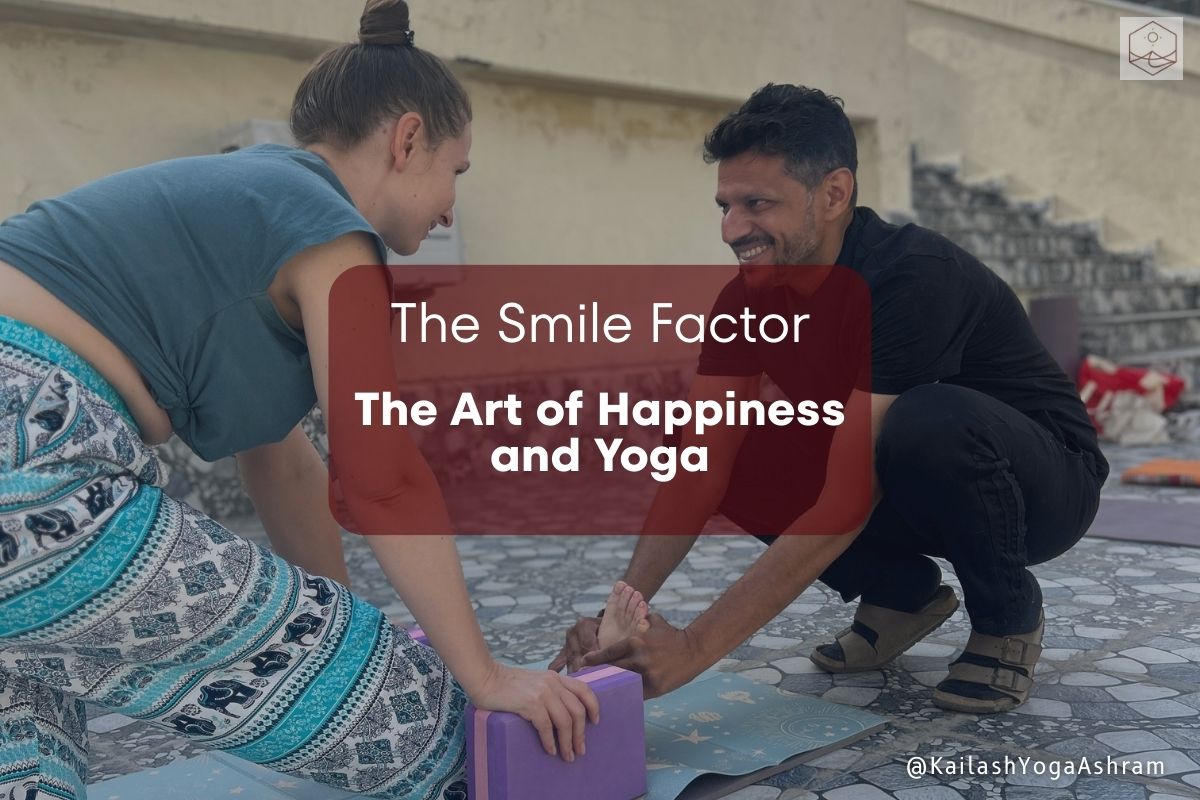The Smile Factor: the Art of Happiness and Yoga
Art of Happiness and Yoga
Smile: Most of us now know the benefits of Yoga are not just physical but also affect the way we think and feel. In fact, the mental benefits of a sense of well-being and inner happiness are well-documented. What is it in our minds that shifts us to a sense of well-being and inner happiness?
Today, much emphasis is placed on understanding how chemicals secreted from various parts of the body create changes necessary for equilibrium and vitality. Some of these chemicals affect our moods and feelings of happiness and belong to a complex system of their own, known as the endocrine system. The endocrine system is a series of glandular systems with their own circulations flowing continually around the body, adding and subtracting chemicals to maintain our well-being and balance. In Yoga practice, we actually massage and systematically pressurize the various glands of this system to harmonize and sometimes recharge our stasis. Each time we focus on squeezing into various parts of the body, such as in twists and backbends, we trigger or inhibit chemical reactions through a biofeedback effect.
How Yoga and Smiling Can Boost Your Mood
Ancient Yoga texts referred to a nectar released from the top of the head during meditation, which gave a sense of harmony to the body/mind state. They may be referring to specific hormones known as endorphins, which calm our system and induce a sense of well-being.
There are various techniques for igniting these “feel-good” hormones, and the simplest is through the facial muscles when we smile. In Yoga, we mention a soft, broad palate. When we initiate this subtle movement, we create a small smile. Once the smiling muscles of the face contract, a positive feedback loop is triggered in the brain, and we feel lighter within. Try it!

4 types of Smiles
“There are four types of smiles. The first type of smile is the cerebral cortex smile, initiated by the cortex upon command. This cortical smiling, or social smiling, cannot be maintained for any length of time because it produces fatigue and heat. It is polite and superficial smiling, polite but false.
The second type of smile is the hard smile. It is produced in response to a challenging social situation, such as when one is confronted with inner feelings of frustration, embarrassment, or confusion, but does not wish to show them. A smile formed only at the cortical level doesn’t create a genuine sense of inner well-being.
The third type of smile is thalamic smiling, which originates in the thalamus, a part of the basal ganglia located at the center of the brain. A smile from the thalamus produces a sense of total well-being; it occurs without the involvement of the cerebral cortex.
The fourth type of smile is the inner smile of total happiness. This is not a social smile or even a smile arising from interaction with another person, although that may occur as well. The inner smile is the smile of every organ and cell in the body – it has nothing to do with the cortex or thalamus. The inner smile relaxes us and creates a total sense of well-being. The breath flows effortlessly, and the body feels radiant and secure. The inner smile arises only when the body begins to release the nourishing essence produced by the organs. It helps cool the internal organs and enhances cellular oxygenation, resulting in a sensation of lightness and overall well-being. All thought drops away, like shedding the autumn leaves.”
Many of us know the ‘inner smile’ as we end our daily Yoga practice, spontaneously smiling and taking that feeling tone with us into our day. We certainly don’t have to try.
Rohit ji, in his work, Yoga Retreats, trains people in the best ways to make their smile more genuine. He advises that before engaging in conversation with someone else, visualize someone you deeply love, or recall an event that brought you deep satisfaction and joy, then the smile comes easily from the inner self.
Hope this may be helpful wherever you are this holiday season.
Lastly, keep on smiling, and the world smiles with you. That too is documented; the contagious effect of someone smiling can lighten someone else’s life. Maybe this can be our Karma Yoga for 2025.


